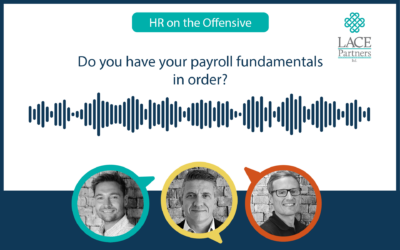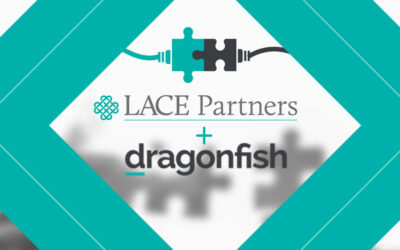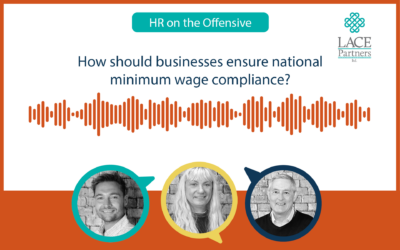There are a few common statements we hear from payroll and HR professionals who approach us at LACE Partners to discuss challenges they are having with their payroll function, be it the system or the processes that aren’t quite working for them. In today’s blog we’ve asked our resident payroll expert Chris Kirby to delve into the root cause of some of the most frequently asked questions and give some insight in to what Payroll Teams can be doing to alleviate those concerns.
“We just can’t get the move to the cloud right”
“We’ve moved to the cloud but have had to increase our headcount”
“Our old system did a better job of managing payroll”
As somebody who has worked across payroll projects of varying size and complexity, these three statements are some of the most common I come across. Indeed, these are things I have found myself saying and have certainly encountered in the past. What most of us Payroll professionals have failed to see was the elephant sat in the corner; complexity, or more specifically where complexity sits.
To address why this is an issue we need to start with what most modern Cloud-based solutions offer, so here are some mission statements from the websites of the biggest players:
“Our cloud HCM solutions are completely designed around employee experiences – what they need, how they work, and what motivates them” – SAP
“ERP systems aren’t built to save you time, not even the ones in the cloud. And upgrades are costly and time-consuming. But imagine if you got the latest version with no disruption. Imagine if automation and innovation helped you run your very best” – Workday
“Learn how to make customers happier and more loyal, by delivering exceptional, digital-first experiences with connected data, self-service capabilities, and AI that supports customer service agents” – Oracle
All these statements are not only great to hear, but they are also addressing some of the core issues most long-serving HR and Payroll professionals have experienced too often. It is therefore very easy to lose sight of what your current systems and processes can do.
It is very easy to believe you switch these solutions on and all of your problems are solved. This can be the case of course, however, the level of effort and more importantly change your organisation will need to navigate to get there depends on what your current solutions do for you. In my experience it is far more likely, if not certain, that you will need to change how you operate, how your teams are structured, sometimes even what you offer employees in order to make them fit.
It is important this change isn’t seen as a negative because doing these things can – and does – enable a simpler future both in technology and corporate terms. What is also important is that you head into these decisions with eyes wide open, and with a full understanding of what your organisation will need to do to make these solutions work for you.
It is true that being able to offer the C-suite an automated set of strategic reports is fantastic, and no longer having to bring your team in out of hours to perform and reconcile system updates is a huge benefit. Giving employees access to all of their information via an app is absolutely where we should be in 2021, and also being able to offer employees their pay on demand is a great way of offering financial wellbeing support (something we recently spoke about in a podcast with Ian Wheeler from Income Group. However, what is really important to employees is that their information is accurate and they are paid correctly. True, we won’t receive a recognition award for this, but it is the one purpose of our function that underpins everything. Get it wrong and we will certainly be receiving recognition- but it won’t be for the right reasons.
Handling the repeatable questions
This brings us to complexity. Businesses with longstanding HR and payroll solutions, often hosted in-house, are likely to have explored the possibilities that the system can offer them in transactional decision making in order to automate the accuracy of peoples pay. By this I mean those decisions that need to be made in order to assign something to someone; which set of terms and conditions is ‘Jane Doe’ on? When did she start in the business? Was she on standby and what has she already been paid for? These are all elements that can be required to make even the simplest of determinations around what to pay someone. This isn’t just related to payroll decisions either, with many organisations having set rules around which contract can be offered to someone based on their location, grade, or qualifications, for instance. As a result, many organisations have this coded into their HR or Payroll solution so they don’t require a person to handle the complexity when they are repeatable decisions.
This is the angle that can be missed when exploring the move to the cloud. It is right to try and achieve all of the benefits that moving to the cloud can offer but what do you need to do as an organisation to make that work? If you have explored this before you will no doubt have heard the industry strapline “configuration not customisation”. As a customer what this boils down to is you having the ability to add different flavours of functionality within a prescribed limit, you may have the ability to enter 10 custom overtime types for instance outside the standard out of the box offering, but you won’t have the ability to build coded rules and decisions which would render the ability to update the system remotely impossible. Complexity essentially goes against the underlying principles of these cloud-based products.
Where does the complexity go and what are the solutions?
If you are an organisation with thousands of decisions and rules built into your HR or payroll systems but you want to explore moving to the Cloud, what do you do? Where does that complexity go?
There can be a very short answer to that question: remove it. It is a short answer with a long solution though as this would involve a company-wide program to harmonise terms and conditions and policies. In the theme of ‘eyes wide open’ though, this is sometimes the best option and enables organisations to re-baseline, especially if they arrived at this point due to significant and quick growth.
Another option is to retain it but recognise you will have the additional cost of a third party to handle the complexity. There are many companies out there offering these solutions whereby they take inputs from multiple sources and have complex rules built to generate outputs which are Cloud-ready.
You could hire more people. Accept that you cannot remove the complexity, but the benefits of cloud-based products outweigh the cost of transactional resource and the increased risk of people making the decisions manually outside of the system.
Another approach is to try and find the middle ground. Find the level of complexity that is possible within these solutions and harmonise/streamline to that level. This can be a significant challenge as to do this effectively you would need clarity on what that level is, and where you are starting from, both of which are hard to define.
The final option is the one you will encounter if you ignore the ‘elephant.’ Spend months or even years recognising the level of complexity your organisation currently operates through failed attempts to force it into a modern and “simple” Cloud-based product.
I imagine we all agree the final option is not one any of us would choose, but it happens far more often than most of us would like to think.
The cloud is the future, at least until Blockchain takes over. Make it work and your employee experience will be improved several fold – pay attention to the elephant though.
Where is your complexity going?
If you would like to talk to us about your payroll challenges and how to address the complexity of your particular issues right now, reach out to us here – we’d love to talk.






